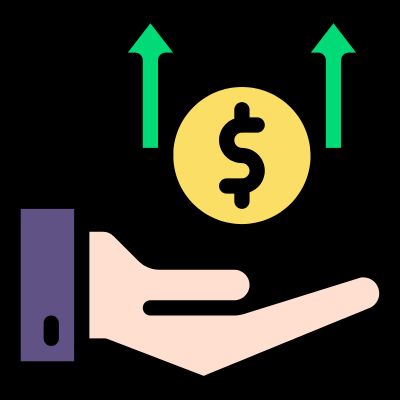Interest Rate News
The average 30-year fixed mortgage rate recently returned to 7%, reflecting a complex mix of economic signals and market expectations. While the Federal Reserve does not directly set long-term mortgage rates, financial markets take cues from various economic indicators that influence their predictions about rate movements. Here’s an in-depth look at why mortgage rates have increased and the factors influencing their trajectory.
Economic Indicators & Market Expectations
Mortgage rates are influenced by investor perceptions of the broader economy. Changes in inflation, employment, and Federal Reserve policies shape these perceptions and create shifts in the bond market, which in turn affect mortgage rates. This year, fluctuations in economic data, particularly employment reports, have led to rising uncertainty, with the most recent data pointing to increased mortgage rates.
- Inflation Pressures: Inflation remains a primary factor impacting mortgage rates. When inflation is above the Federal Reserve’s target of 2%, bond investors may demand higher returns, which leads to increased yields on long-term bonds, including mortgage-backed securities. Higher yields translate into higher mortgage rates, as lenders pass these costs onto borrowers.
- Employment Data: Recent declines in the unemployment rate have reduced fears of an imminent recession, diminishing the demand for “safe” investments like Treasury bonds and mortgage-backed securities. In September, the unemployment rate fell back to 4.1%, a decrease that signaled economic resilience to investors. With fewer investors seeking low-risk securities, bond prices dropped, and yields rose, resulting in a corresponding rise in mortgage rates.
Also Read: Down Payments Drop While Housing Affordability Issues Persist
Influence Of The Federal Reserve’s Policies
While the Federal Reserve does not directly set mortgage rates, its policies heavily influence them. By raising or lowering the federal funds rate, the Fed signals its stance on inflation, which has indirect effects on long-term interest rates, including mortgages.
- Interest Rate Projections: In recent months, weaker-than-expected employment data led the Federal Reserve to consider future rate cuts. However, the Fed’s recent move to maintain its rate rather than cut it has reassured investors that interest rates will not drop immediately. This stance, combined with lingering inflation, suggests that mortgage rates may remain elevated for the foreseeable future.
- Federal Reserve’s Dual Mandate: The Fed’s ongoing commitment to balance stable prices with full employment means that significant economic changes—such as rising inflation or falling employment—will influence its policy decisions. With the current economic stability, mortgage rates are expected to reflect the Fed’s cautious approach, staying around the 7% mark until there is a shift in either employment or inflation data.
Fiscal Policy & Market Reactions
Anticipated fiscal policy changes also play a role in the financial markets’ outlook on long-term rates. In particular, government deficits and spending patterns shape expectations for inflation and interest rates.
- Impact of Government Borrowing: When the government increases borrowing to cover budget deficits, it raises the supply of Treasury bonds available in the market. Investors, anticipating this surplus, often demand higher yields, which pushes up long-term interest rates, including those on mortgages. Markets are also influenced by potential shifts in fiscal policy following upcoming elections, with both parties holding divergent views on spending that may affect the budget.
- Inflationary Policies: Investors are keenly watching the fiscal strategies that may follow the election. Higher fiscal spending often leads to inflationary pressures, which can further increase mortgage rates. If fiscal policy leans toward increased spending or higher deficits, we may see upward movement in mortgage rates as investors build in these inflation expectations.
Also Read: Interest Rates Up & Greater Phoenix Real Estate Market Update
Watching Treasury Yields For Mortgage Rate Trends
The 10-year Treasury yield is a reliable benchmark for predicting mortgage rate movements. As mortgage rates tend to rise or fall alongside 10-year yields, financial markets closely track Treasury trends. This year, market sentiment around government borrowing and inflation has significantly influenced the 10-year yield, pushing mortgage rates higher in response. When Treasury yields increase, lenders need to offer higher mortgage rates to remain competitive with these yields.
With elections on the horizon, shifts in Treasury yields could offer insight into market expectations regarding fiscal policy. Investors anticipate that clear election outcomes will signal potential economic strategies, allowing them to adjust their bond investments accordingly. If Treasury yields trend upward in response to perceived inflationary policies, mortgage rates may remain elevated in parallel.
Economic Outlook & Potential Scenarios
Looking ahead, the direction of mortgage rates will hinge on key economic data and Federal Reserve decisions. Here are potential scenarios that could influence rate trends:
- Rising Unemployment or Slower Economic Growth: If the unemployment rate rises again or economic growth slows significantly, demand for Treasury bonds could increase, causing yields to fall. This shift would likely ease mortgage rates, providing relief for borrowers.
- Continued Low Unemployment and Elevated Inflation: Conversely, if the unemployment rate remains low and inflation does not decrease, mortgage rates could stay elevated as investors anticipate further inflationary pressures and demand higher returns.
- Fiscal Policy Changes and Potential Government Deficits: The next fiscal year may bring new budget priorities, especially if one party gains control over both legislative branches. Increased government borrowing to fund budget priorities may drive up bond yields, keeping mortgage rates high as long as inflation expectations persist.
In summary, the recent rise in the average 30-year fixed mortgage rate to 7% reflects a blend of economic stability, inflation concerns, and cautious Federal Reserve policies. By monitoring Treasury yields, Federal Reserve updates, and fiscal policy shifts, borrowers can gain a clearer perspective on mortgage rate trends.
Also Read: The Housing Affordability Crunch Is A Strain That’s Only Growing
